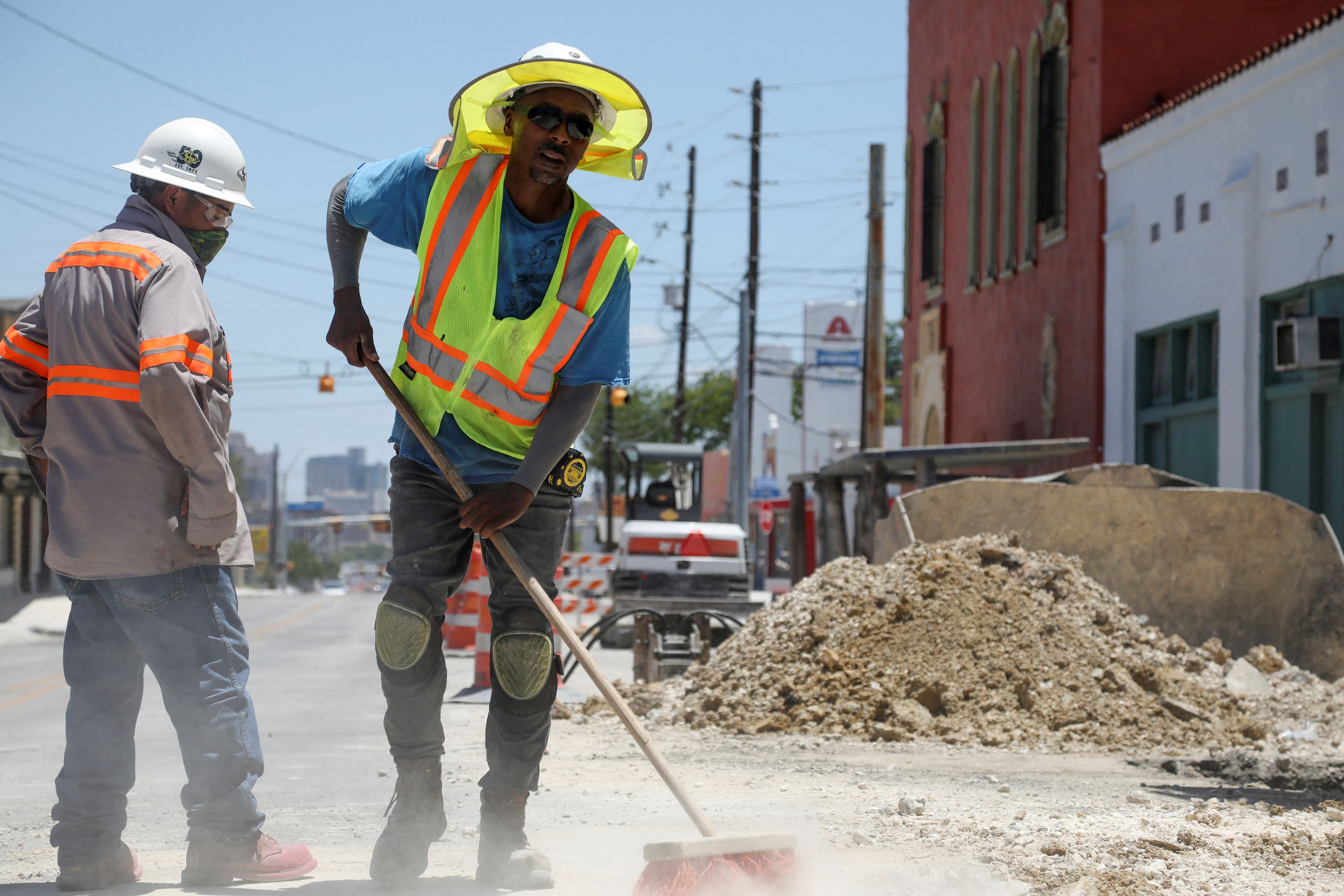
Everyone who cares knows that recessions happen when there are two consecutive quarters of negative growth — everyone, that is, except for the people who actually decide when the economy is in recession.
For those folks, at the National Bureau of Economic Research, the definition of recession is much squishier.
Officially, the NBER defines recession as “a significant decline in economic activity that is spread across the economy and lasts more than a few months.” The bureau’s economists, in fact, profess not even to use gross domestic product, the broadest measure of activity, as a primary barometer.
That’s important, because data coming Thursday could indicate the U.S. saw its second straight negative-growth period in the second quarter. Even though every period since 1948 of two consecutive negative quarters has coincided with a recession, that may not happen this time.
Why? It’s complicated.
“The NBER would be laughingstocks if they said we had a recession when we were creating 400,000 jobs a month,” said Dean Baker, co-founder of the Center for Economic and Policy Research. “I can’t even imagine they would think for a second that we’re in a recession.”
Indeed, nonfarm payrolls grew an average 457,000 a month during the first six months of the year, hardly conditions associated with an economic downturn. Moreover, there are 11.3 million job openings and just 5.9 million available workers to fill them, indicating hiring should continue to be strong.
The case for recession
But there have been downsides as well.
Consumer spending on a dollar level has been solid, but when adjusted for a 40-year high for inflation it has been much less so. The U.S. trade deficit hit a record high in March, another negative for GDP. Inventories have lagged, which also hurts growth as it is measured by the Bureau of Economic Analysis.
To the public, though, these are just details left for economists to figure out. If the second-quarter GDP number comes in negative, and journalists and the White House don’t call a recession, it’s bound to spark confusion and perhaps some anger from those who have been hit by surging inflation and a clear slowdown in aspects of the economy.
After all, there are a lot of things that are making it feel like a recession from sky-high prices, widespread product shortages and warnings from companies like Walmart that profits are shrinking due to changing consumer habits, just to name three.
The first quarter saw GDP contract 1.6%, and the Atlanta Federal Reserve’s real-time tracker is indicating the same decline for Q2.
“I think it’s still just a game of semantics. The trajectory of the economy is clearly lower, whether we’re going to define it as [a recession] or not,” said Peter Boockvar, chief investment officer at the Bleakley Advisory Group. “If anything, the third quarter is going to show further weakness. So you could have three quarters in a row of contraction for GDP. Does that technically mean we’re in a recession?”
The criteria
For its part, the Cambridge, Massachusetts-based NBER is a bit of a shadowy group, meeting in private and not making recession calls generally months after they begin, and sometimes not until well after they’ve ended. Its most recent call came from the Covid-19 downturn, which it said began in February 2020 and ended two months later.
Still, the government and most business news outlets take the NBER’s rulings as gospel when determining expansions and contractions.
The organization is generally thought to use six factors: real personal income minus transfer payments, nonfarm payrolls, employment as gauged by the Bureau of Labor Statistics’ household survey, real personal consumption expenditures, sales adjusted for price fluctuations and industrial production.
The NBER did not reply to a CNBC request for comment.
“If this definition feels involved, it’s because it is,” Tim Quinlan, senior economist at Wells Fargo, said in a client note. “Defining a recession isn’t easy and extends beyond simply a downturn’s duration to how deep and widespread it is throughout the economy.”
Quinlan said the data points can be broken into four bigger groups: production, income, employment and spending.
“The economy has never been in recession when at least three NBER indicators rose during the month,” he said. “While we do not yet have real sales through May, nonfarm employment, real personal income less transfers and industrial production all rose during the month, suggesting the economy is not yet in recession.”
If the NBER does not call a recession anytime soon, the next question will be what is down the road.
Boockvar sees a recession as an inevitability, with the NBER declaration just a matter of timing. “I wouldn’t be surprised if their recession start date was a little bit later,” he said.
For all his optimism about first-half growth, Baker said he sees GDP coming in plus or minus 0.4%. After that, he acknowledges that there’s still a chance of a recession in the months ahead, though he thinks there’s a good chance the U.S. will avoid that fate.
Like many others, Baker fears that Federal Reserve interest rate increases aimed at controlling inflation and slowing the economy could overdo it and cause a downturn ahead.
But he’s sure that conditions from the first half do not point to a recession.
“Were we in a recession in the first half? That just makes zero sense,” Baker said. “The NBER people, I respect them as serious economists. There’s no way they’re going to say that’s recession.”



